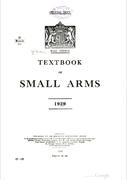What's the source of the quote? It reads as though it refers to the days of the Lee Enfield Mk.I and the sighting problems detected in South Africa(?)
The tests recounted in the same TBSA 1929 remind us that where chamber wall adhesion occurs in firing without the presence of oil, grease or water to interfere there much less back pressure on bolts and bolt heads than we tend to assume. I can't find the text from TBSA at the moment, but here is an article posted by Ed Horton in 2009 that goes into some detail: Rifle Chamber Finish Friction Effects on Bolt Load and Case Head Thinning Calculations done with LS-DYNA
Chamber wall adhesion alone tends to negate the oft expressed concerns about the strength of the action and its "unequal" proportions on either side. The importance of dry and clean chambers and ammunition seems not to be as widely known as it should be however.
The flexibility and resulting "compensation" turned out to be advantageous.
Overall events have proven that J.P. Lee and his later assistants did a fine job, though it certainly took a long time to incorporate some of the later improvements.
- Knowledge Library

- MKL Entry of the Month
- Australia
- Austro-Hungarian Empire
- Canada
- Czechoslovakia
- Denmark
- Finland
- France/Belgium
- Germany
- Italy
- Japan
- Norway
- Russia
- South America
- Sweden
- Switzerland
- Turkey
- United Kingdom
- United States
- Yugoslavia
- Is my rifle authentic or a fake?
- Jay Currah's Lee Enfield Web Site
- On-line Service Records (Canada)
- Technical Articles/Research
- Forum
- Classifieds

- What's New?
-
Photo Gallery

- Photo Gallery Options
- Photo Gallery Home
- Search Photo Gallery List
-
Photo Gallery Search
- Video Club

- iTrader














 PM
PM


